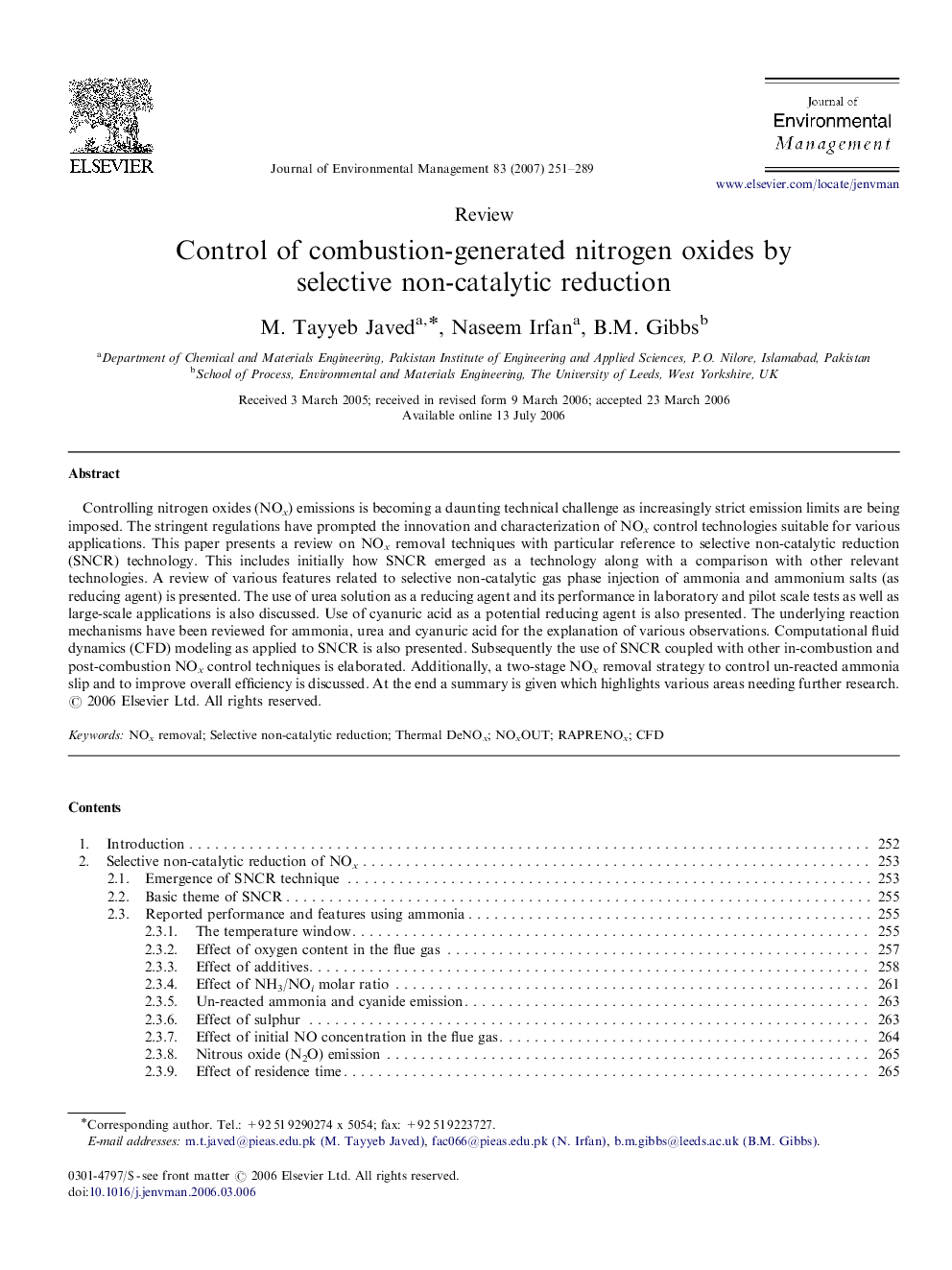| Article ID | Journal | Published Year | Pages | File Type |
|---|---|---|---|---|
| 1058864 | Journal of Environmental Management | 2007 | 39 Pages |
Controlling nitrogen oxides (NOx) emissions is becoming a daunting technical challenge as increasingly strict emission limits are being imposed. The stringent regulations have prompted the innovation and characterization of NOx control technologies suitable for various applications. This paper presents a review on NOx removal techniques with particular reference to selective non-catalytic reduction (SNCR) technology. This includes initially how SNCR emerged as a technology along with a comparison with other relevant technologies. A review of various features related to selective non-catalytic gas phase injection of ammonia and ammonium salts (as reducing agent) is presented. The use of urea solution as a reducing agent and its performance in laboratory and pilot scale tests as well as large-scale applications is also discussed. Use of cyanuric acid as a potential reducing agent is also presented. The underlying reaction mechanisms have been reviewed for ammonia, urea and cyanuric acid for the explanation of various observations. Computational fluid dynamics (CFD) modeling as applied to SNCR is also presented. Subsequently the use of SNCR coupled with other in-combustion and post-combustion NOx control techniques is elaborated. Additionally, a two-stage NOx removal strategy to control un-reacted ammonia slip and to improve overall efficiency is discussed. At the end a summary is given which highlights various areas needing further research.
